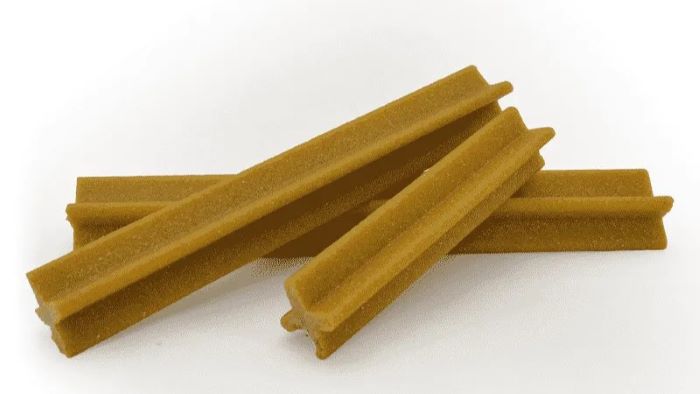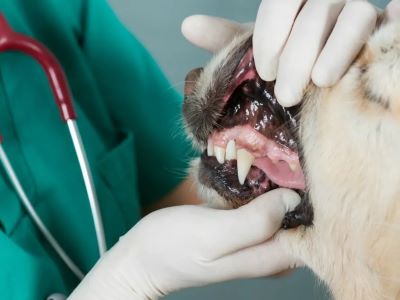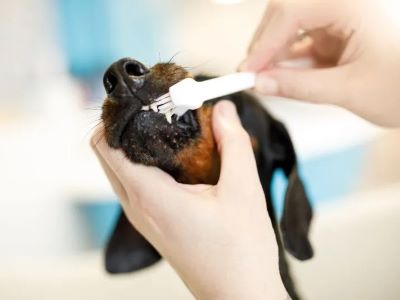Maintaining a dog’s oral hygiene is an important part of grooming. It is important to keep a dog’s teeth clean to avoid the problem of bad breathing as well as the diseases caused due to it.
Even though keeping a dog’s teeth clean is important most paw parents skip regular brushing due to hustle related to it. In such cases using Dentastix is considered to be an easy alternative to maintain a dog’s oral hygiene.

While using Dentastix there must be many speculations rising in your mind. Whether it is safe to use Dentastix or not, whether it will suit your dog, whether it is digestible, what ingredients are used to make it and so on. Here in this blog, we will try to resolve all your doubts.
Why Dental Health Matters for Dogs?
As we humans brush our teeth daily to keep them clean same is to be done with dogs too. It is very important to maintain a dog’s dental health as not doing so can lead to many health complications.
Here are the following reasons why a dog’s dental health matters:
- Not maintaining a dog’s dental health can lead to bad breath in your dog.
- Dog’s gum gets weakened if not cleaned regularly which causes difficulty in chewing.
- If your dog’s teeth are not cleaned regularly then it will lead to tartar and plaque build-up. When your dog consumes the food the bacteria will travel along with it in the stomach causing infection and many gastrointestinal issues.
- Not maintaining a dog’s dental hygiene can even lead to problems like tooth decay, and gingivitis and may have to extract the teeth too.
Thus due to the above-mentioned reasons, it is important to maintain a dog’s dental hygiene. To prevent your frequent visits to a vet and to avoid further health complications it is necessary to clean your dog’s teeth regularly.
What Are Dentastix and How Do They Work?
Dentastix are dental treats which are available in various sizes and flavours. They are star-shaped which enables them to clean the hard-to-reach areas of your dog’s mouth.

Dentastix consists of ingredients such as sodium tripolyphosphate[1] which holds the calcium in the dog’s saliva stopping the tartar formation. It is also made of rice flour and wheat starch. This helps in plaque removal.
These Dentastix are chewable and can be easily digested by your dog, leading to overall cleaning of your dog’s teeth.
The Benefit of Dentastix for Dogs
Here are the following benefits of using Dentastix for dogs:
- Tartar build-up causes inflammation, infection in dog gums and even tooth decay, dentastix consisting of sodium tripolyphosphate binds the calcium in the dog’s saliva and prevents the tartar formation.
- Dentastix boosts saliva production. Saliva moisturizes the dog’s mouth and throat and helps in easy digestion. It also helps maintain the pH level in the dog’s mouth and removes harmful bacteria.
- The unique star shape of dentastix reaches the difficult area of the dog’s mouth removing the stuck food particles and plaque.
- Dentastix helps in preventing bad breath in your dogs.
Potential Risks and Side Effects of Dentastix
Here are some potential risks associated with Dentastix:

- Dentastix is high in calories and fat, thus consuming them in excessive amounts can lead to upset stomach, vomiting and diarrhoea in your dog.
- It contains wheat starch which may be hard for your dog to digest.
- Dentastix consists of artificial additives and flavourings like propylene glycol which can lead to breathing difficulties and allergic reactions.
- The presence of propylene glycol which has carcinogenic properties can increase the cancer risk in your dog.
- Dentastix if not chewed properly can get stuck in your dog’s intestine causing blockage.
- While buying Dentastix look for its expiry date as well as packaging because if not stored properly it can have mold and bacteria build up.
- Avoid giving Dentastix to puppies under four month and 2 kg weight.
How To Choose the Right Size and Flavor of Dentastix for Your Dog?
Choosing the right dentastix is quite a task but at the same time, it is important too. Here are some things to keep in mind while choosing the Dentastix for your dog:
1) While purchasing the dentastix have a look at the age and size mentioned on the packaging. Dentastix are available in small, medium and large size. Choosing the wrong size can lead to creating blockage in your dog’s stomach.
As mentione by Dr. Michelle Diener, DVM in petmd, "When you pick out dental treats or chews for your dog, make sure they have the Veterinary Oral Health Council’s Seal of Acceptance on the packaging, as this seal indicates that these products help control tartar buildup."
2) Check for the flavours and ingredients mentioned on the package of Dentastix. If your dog is allergic to any flavour or ingredient then avoid buying it.
3) Check for the sugar and calorie ratio. Avoid buying Dentastix with high fat and calories.
Safe and Effective Alternatives to Dentastix
Here are some safe and effective alternatives to Dentastix:

Brushing:
Brushing is the key to maintaining a dog’s dental hygiene. It can prevent tartar formation and plaque build-up keeping them clean. This in turn reduces the chances of dental issues and prevents the bad breath problem.
Raw bones:
Raw bones too help in preventing tartar and plaque formation and increase saliva production. The bones should not be cooked as if cooked will break into small pieces on your dog’s chewing. This can lead to it getting stuck in your dog’s teeth or intestine.
Fruits and vegetables:
Fruits and vegetables are great alternatives to dentastix. Them being rich in vitamins and minerals provide antioxidant properties. They help in the overall cleaning of your dog’s mouth.
However, the fruits and vegetables should be in raw form. Avoid fruits and vegetables toxic to dogs such as grapes, onions, garlic, etc.
Rawhide chews:
Rawhide chews[2] consist of dried animal skin making it organic floss to clean dog’s teeth. Though they help in maintaining dog’s dental hygiene they have chocking and blockage risks associated with them.
Dental chews:
Dental chews are similar to dentastix, they are made up of natural ingredients. They are very useful in removing tartar and plaque from your dog’s teeth and should be given in moderate quantities only.
FAQs
Can dogs eat dental sticks every day?
Yes, dogs can eat dental sticks every day, but not in excessive quantity. You should give your dog one stick a day. If your dog eats more than one stick a day, he is likely to have health issues like vomiting, diarrhoea, and gastrointestinal diseases.
Is Dentastix digestible?
Yes, dentalstiks are digestible. They are made to clean your dog’s teeth by removing plaque and tartar and can be easily digested by the dog. However, you should avoid giving Dentastix to puppies below four months as it is unsafe for them. Keeping a close watch on your dog is important because if he consumes a large chunk of Dentastix then it can lead to choking.
Are Pedigree Dentastix harmful?
No, pedigree Dentastix are not harmful to dogs, they are made of ingredients digestible for dogs and are generally considered safe for dogs. Yet if given in large quantities it can affect the health of your dog.
Are Dentastix vet-approved?
Yes, Dentastix is vet-approved and good for a dog’s overall dental hygiene. But not all brands are vet-approved, so before feeding your dog dentastix consult a vet. It is advised to use the Dentastix recommended by a vet.
Is Dentastix a replacement for brushing?
No, Dentastix is not a replacement for brushing, they are just normal treats given to dog which helps in cleaning their teeth. Even if you are giving your dog dentastix don’t skip the brushing process. Brushing the dog’s teeth daily is a basic necessity which should not be compromised in any condition.
Conclusion
Dentastix are a great source to help you clean your dog’s teeth but they should not be the replacement for brushing. There are many Dentastix available in the market so consult your vet before choosing any randomly.
Choose the right size of Dentastix and avoid giving more than one stick a day to your dog. If you notice any abnormal changes in your dog after giving Dentastix then consult a vet immediately.
Reference:



